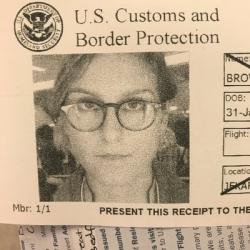The population of rural Iceland is shrinking. Since 1998, the northwest (Norðurland vestra) has lost almost 1,000 people—mostly young adults—according to an article published in Feykir in 2013. In the last five years, the population of young adults 35 and under the region has decreased further by 4%, according to Statistics Iceland. With only one menntaskóli in the region in Sauðárkrókur, many students leave to pursue their studies elsewhere, and many never return to the region after graduating. A lack of opportunities may be to blame.
Magnús Bjarni Baldursson, a former business and opportunity consultant for Samtök Sveitarfélaga á Norðurlandi vestra (SSNV), says, “There aren’t too many applicable jobs or employment opportunities here in the region. This is a farming and agricultural community,” he says, “employment opportunities for those who have a university degree are very limited.”
Striking contrast
The decreasing trend of Norðurland Vestra’s population is a striking contrast to the increasing one in the Capital Region, where there was an increase of 3,850 inhabitants in the 2nd quarter of 2017, as reported.
María Björk Ingvadóttir, former Leisure Director at the Municipality of Skagafjörður, reported in Feykir that the focus of rural communities has not been specifically on the youth, and that measures should be taken to strengthen the desirability of the area as a more suitable place to live.
“We need more variety in jobs here in the area,” says Hanna Dóra Björnsdóttir, principal of Skagafjörður’s Varmahlíðarskóli. “Our area needs to be able to offer young people the same opportunities that they can have in other places.” According to Hanna, the average salary in the region is lower than in other areas. “That’s not good enough,” she says. “It’s not helping, and that needs to be changed.”
Starving arts education
In Norðurland vestra, a contributing factor to the decreasing population is the below average income, which plays a part in a lower demand for arts education. Music and theatre survive through private classes and school plays, but instruction of other mediums has fallen by the wayside. “In terms of specialized mediums like writing, painting, or design, there are very limited options,” says Magnús.
“There is not enough here,” adds Hanna. “We have a lack of creative possibilities because we don’t have many people and sometimes when it comes to funding it can be difficult to turn ideas into realities,” she says.

Soul care
The arts are often the first to be cut and evaporate from a community, according to Bjarki Valtýsson, associate professor for the Department of Arts and Cultural Studies at the University of Copenhagen, and author of the book Islensk menningarpolitik (Icelandic Cultural Politics).
“When things are going well economically, cultural activity is a surplus,” says Bjarki, “but these are not life-threatening categories, like health. When things get ugly financially, people tend to think “well, we need to take care of our bodies,” but they sometimes forget about their souls. That’s an indication of how things are kind of perceived in terms of what’s important in society.”
In low-income places, financial limitations often become embedded in the mindset of people, according to Magnús. “If they’re embedded, every monetary value created is of more importance, but it would be to our benefit to re-educate ourselves in terms of what is valuable and what is not in a society,” says Magnús. “We could foster [the arts] so much more. It is who we are. It is part of our culture. Without culture, what is a society?”
Possible futures
Measures are being taken to combat the declining population. Offices like Byggðastofnun are working to create new opportunities; every year they offer grants for new businesses, focusing on entrepreneurs aged 35 and under. Schools like Varmahlíðarskóli are also working to integrate additional art classes into their curriculum and furthering their reach into the community with music performances and plays.
But according to Magnús, much more can still be done. “I think we could do a much better job,” he says. “There’s still more want and need among young people here than is being offered. There needs to be a spectrum of opportunities,” he says, “and that just doesn’t exist here.”
Tourism may also be contributing to the problem “With tourism now blossoming in the area, the focus diverts from creative extracurricular activities to the management of tourism or farming or the services around farming,” says Magnús. “Though I do hope that we do not place monetary value on everything we do here.”

Community survival
The survival of a community requires long-term vision and impetus. In Norðurland vestra, as well as in many rural communities throughout Iceland, developing a wide range of employment opportunities for university graduates is as critical as generating interest in a variety of subjects for students, including the arts in schools.
“When you educate yourself, you really want to contribute to society through that education,” says Bjarki. “If that is not a possibility because of a lack of opportunities that speak to your profession, that is going to be a problem.”
If there is an absence of a long-term vision that prioritizes diverse employment opportunities, small communities like those in Norðurland vestra are at risk of continued population decline.
Buy subscriptions, t-shirts and more from our shop right here!
















